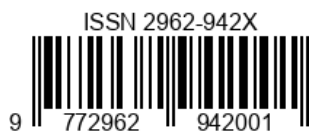Pendampingan dan Pengembangan Inovasi Usaha Mikro Kecil dan Menengah (UMKM) Omah Dayang di Keluarahan Sananwetan
DOI:
https://doi.org/10.55606/jpkm.v2i3.184Keywords:
MSME Innovation Development, Social Media, Digital Media, BrandingAbstract
Micro Small and Medium Enterprises (MSMEs) are experiencing the impact of the Covid-19 pandemic. The decline in consumer purchasing power is a challenge for SMEs in carrying out their business production. One of the opportunities for MSME actors to survive in the current pandemic is by maximizing online sales. But not a few MSME actors who still do not understand to use online sales. Therefore, it is necessary to empower the community of MSME actors in trying online markets or other options by empowering MSME actors in branding superior products. By using and managing the right digital media, it is hoped that business actors can increase public interest in products. Digital media that can be used include Instagram, Facebook, WhatsApp, Youtube, GrabFood/Go-Food or other platforms. Business actors can also carry out brand awareness offline, that is, they can develop innovations that do not yet exist, such as promotions by distributing brochures, creating attractive menu lists or creating price tags. The approach method used in community service this time is in the form of mentoring business actors regarding the development of MSME business innovations where members go directly to the field. This MSME assistance activity was carried out. The process of SME Mentoring activities is in the form of interviews with business owners to find out the current situation of their business conditions, members help make snack box orders, make banners/banners and price tags as an effort to carry out brand awareness, and members also provide medical equipment in the form of masks, hand sanitizer, and plastic gloves to business managers as a form of attention to always maintain health protocols when interacting with customers.
References
Tambunan, Tulus T.H. UMKM Di Indonesia, (Jakarta: Ghalia Indonesia, 2019), Cet, Ke-1
Hafni, Roswita dan Ahmad Rozali. Analisis Usaha Mikro, Kecil, dan Menengah (UMKM) Terhadap Tenaga Kerja di Indonesia. Jurnal Fakultas Ekonomi: Universitas Muhammadiyah Sumatera Utara
Kemenkop dan UKM. (2015). Renstra_Kementerian_Koperasi_dan_UKM_2 015-2019. http://www.depkop. go.id/berita- informasi/data-informasi/ perencanaan- program/ (diakses Agustus 6, 2021)
Supriyanto. 2006. Pemberdayaan Usaha Mikro, Kecil, Dan Menengah (UMKM) Sebagai Salah Satu Upaya Penanggulangan Kemiskinan. Jurnal Ekonomi Pendidikan.Vol. 3 No (1) Hal:1-16.
Saputro, dkk. Peta Rencana (ROADMAP) Riset Enterprise Resource Planning (ERP) Dengan Fokus Riset Pada Usaha Kecil Dan Menengah (UMK) Di Indonesia. Journal of Information Systems.Vol. 6 No (2) Hal:140-145.
Budiyanto, Arief dan Aidil Amin Effendy. 2020. Analisis Kebijakan Pemerintah Kota Blitar Dalam Memberdayakan Peranan UMKM dan Koperasi Terhadap Perekonomian Kota Blitar. JURNAL MANDIRI: Ilmu Pengetahuan, Seni, dan Teknologi, Vol. 4, No. 1
Downloads
Published
How to Cite
Issue
Section
License
Copyright (c) 2023 Sonia Ayu Cahyani, Nurul Azizah

This work is licensed under a Creative Commons Attribution-ShareAlike 4.0 International License.







